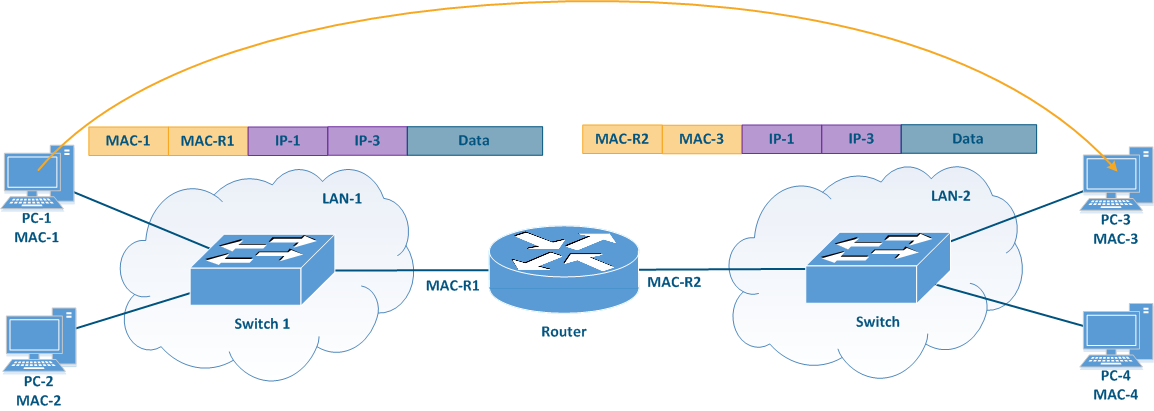...
| Center |
|---|
Figure 1a - Example of data transmission from PC-1 to PC-2 Figure 1b - Example of data transmission from PC-1 to PC-3 |
Routing
The main networks function of a network is the ability to organize establish the communication between any arbitrary nodes connected to this that are part of the network. Using for these tasks the only packet switching technologies associated with the link Layer 2 (Link layer) of the network interaction model has a number of disadvantages:
- There is a risk of loops appearance Loops can occur when using some data-link protocols such as Ethernet. The risk can be minimized by using third party tools such as STP, but the risk is not limited mitigated by standard Ethernet facilitiesfunctionalities.
- The amount of broadcast traffic amount depends on the number of devices that are connected to the network. To In order to ensure that the amount of broadcast traffic in compared to the total traffic is not large, the number of devices number connected to one broadcast domain should be limited. Thus, all network devices cannot be connected to the same broadcast domain, which makes it impossible using to use L2 layer protocols to organize for establishing global device connectivity.
- Switches to transmit data operate on The switches operate with Ethernet frames , the whose headers of which contain the source and destination devices MAC addresses. Each entry in the switching table contains the MAC address of the device's interface and does not support the mechanism for grouping there is no support for a mechanism that can group these addresses. Thus, ensuring global connectivity will using only L2 switching would require switching tables , which that include the MAC addresses of all the devices in the world at each network node.
The IP network layer protocol, which is widely used to provide connectivity in large and global networks, lacks these disadvantages. IP The IP protocol is not a replacement for Ethernet, these protocols work together and perform different functions: Ethernet provides data transfer within the communication channel, IP devices in the same subnet, while the IP protocol is responsible for global addressing and node communicationthe communication between the nodes belonging to different subnets.
Currently, two versions of the IP protocol have become widespread: IPv4 and IPv6. Since Infinet the InfiNet devices currently support only the IPv4 protocol, further the current article will contain only detail the description of only this versionoperation of the IPv4 protocol.
IP protocol
IP address
The IP protocol provides for using 32 bits for addressing nodes in the network, which are usually divided into four octets and written in decimal form, separating octets with dots (Figure 2). IP addresses examples:
...

